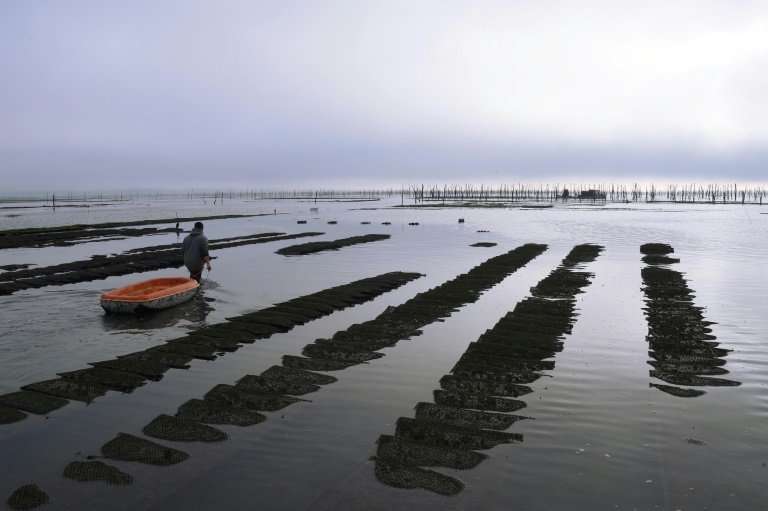Scientists finger culprits decimating France's oysters

A two-pronged attack by a virus and bacteria is responsible for decimating France's 450-million euro ($520 million) oyster industry, scientists said Thursday, potentially solving a decade-long mystery.
Beginning in 2008, large numbers of young Pacific oysters have died in French waters in certain years, with mortality as high as 100 percent in some farms.
Scientists scrambling to find the cause identified several pathogens during different dieoffs, but could not find a consistent pattern.
A team of 30 researchers led by Yannick Gueguen from the IFREMER institute and Guillaume Mitta of the University of Perpignan conducted experiments to show how the herpes virus OsHV-1 weakens the young oysters' immune systems, opening the way for several bacteria that come in for the kill.
The disease-complex hits both farmed and wild Crassostrea gigas oysters, by far the largest commercial species in the world.
Their findings were published in the journal Nature Communications.
The periodic outbreaks hit not only all French aquafarms, "but others in Europe, along with some in China, Australia, New Zealand and South Korea," Mitta told AFP.
More than 80 percent of global oyster production is in China.
In vulnerable oysters, the virus replicates and weakens the immune system within 24 to 48 hours. After that, it takes less than another day for the bacteria to finish off the bivalves, the scientists showed in experiments duplicating natural conditions.
Oysters that resisted the attack were able to prevent the replication of the OsHV-1, which intensifies in waters 16 to 25 degrees Celsius (60 to 75 degrees Fahrenheit).
Even if scientists have now identified the combination of pathogens killing oysters, the broader causes remain unclear. Pollution and ocean waters warming due to climate change may both play a role.
The key now "is to find a way to limit the development of the virus," Mitta said.
Finding species that are more resistant could also be a solution, though it is not sure they would meet the same degree of acceptance by connoisseurs, the study said.
More information: Julien de Lorgeril et al. Immune-suppression by OsHV-1 viral infection causes fatal bacteraemia in Pacific oysters, Nature Communications (2018). DOI: 10.1038/s41467-018-06659-3
Journal information: Nature Communications
© 2018 AFP


















